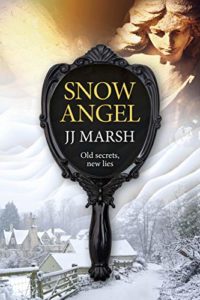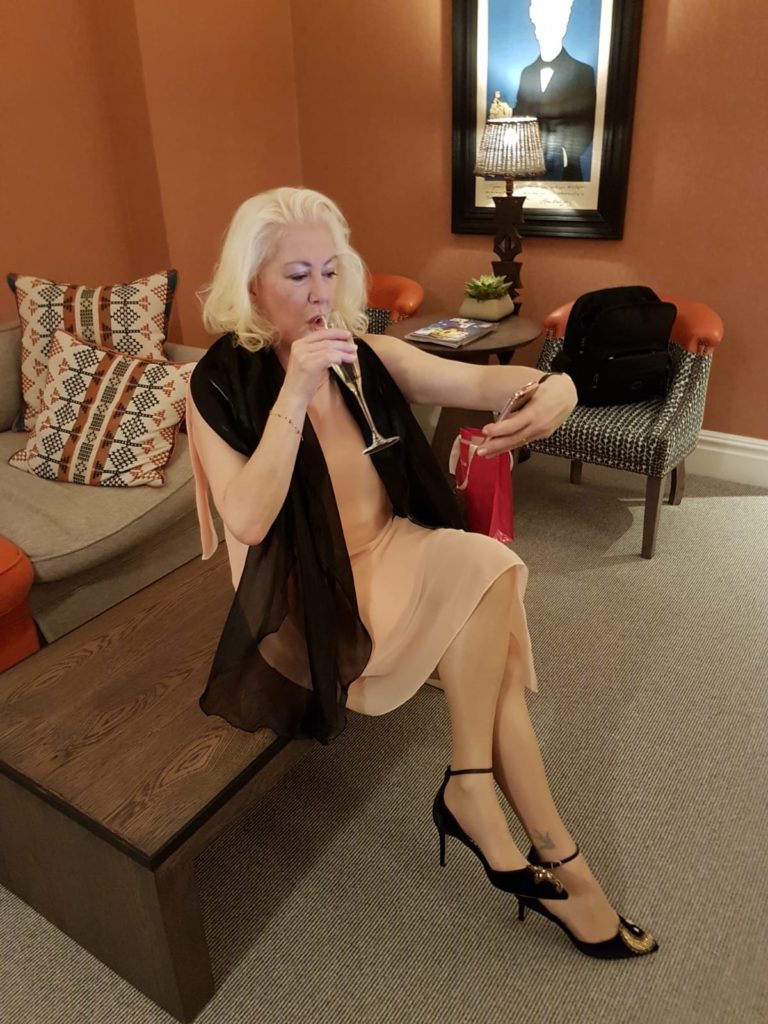As a child, Jill read so obsessively she got kicked out of the school library. But her passion for words continued. She graduated in English Literature and Theatre Studies from the University of Wales and set up a theatre company.
Since then, as an actor, director, teacher, writer and journalist, she’s worked in fifteen countries. Now, with her husband and three dogs, Jill lives in Switzerland, a country with four languages and mountains of new words.
Jill is a founder member of Triskele Books, European correspondent for Words with JAM magazine, co-edits Swiss literary hub The Woolf and writes European crime novels The Beatrice Stubbs Series. And she still reads.
Over to Jill…
“Three years of studying what?!”
You don’t need to go to university, love, you’re already a drama queen!”
“What’s the first thing a graduate says after getting an arts degree? You want fries with that?”
My choice of degree – Joint Honours in Drama and English – gave the locals at my parents’ pub hours of amusement. Even more so after my first term when I proudly came home and demonstrated my new skill: fire-eating.
But after three years of studying theatre and English literature, I can honestly say I used what I learnt in every job I’ve had. Obviously, as an actor and director, certainly as a teacher and trainer, undoubtedly as a journalist. But never more so than as a crime writer.
I know what you’re thinking. Character and dialogue come easily to someone with a background in theatre. To a point, yes. But for me, the real benefit is constructing a story.
Most writers are familiar with the three-act structure (terms and amount of story they take up may vary). Here’s my loose rule of thumb:
Inciting Incident (II): Act One (20%)
Here is where we build storyworld, introduce character and set the scene. The status quo is established and rapidly changed. Give our MC (main character) two things: Drive and Danger.
Progressive Complications (PC): Act Two (60%)
MC chases Drive, often thwarted by Danger. Build character, settings and relationships to environment, while keeping the hand on the Drive.
Climax and Conclusion (CC): Act Three (20%)
Crunch time. MC faces Nemesis, wins or loses. Or maybe just learns. After winding tension to snapping point, a moment to observe the change. Curtain call.
All in all, a very well-made play. How can we deepen that and add layers so the rhythm of tension, relief, curiosity, concern and plain old drama never feels repetitive or stale?
There are as many answers to that question as there are authors. My method? Multiply by three.
When sketching out a Beatrice Stubbs novel, I have three key plots. Plot A is usually the main crime story involving villain(s) and detectives. Plot B is the counterpoint, perhaps a secondary investigation which comes to bear on Plot A, or a character journey which influences emotions. The third plot is nearly always a clash of personalities, sometimes key players, sometimes secondary characters. Each has its Inciting Incident, Progressive Complications, and Climax & Conclusion.
But not at the same time
These three storylines con be conducted as instruments in an orchestra. One story begins alone and is soon joined by another. Their rhythms work in counterpoint, so when one storyline is downbeat, the other flies upwards. Adding to the harmony is the third narrative. This carries a tension and development of its own, lifting any lulls and offering the reader a rest and maybe even a smile.
Each thread starts and ends at a different point, so plots B and C fade out before the end, allowing the soloist centre stage. Here’s an example from the second in the series, Raw Material.
In this diagram, you can see the main plot dominates, its Inciting Incident at the beginning and its dénouement at the end. The other two stories weave in and out but are completed before Plot A ends. The final scene, or coda, may include elements of Plots B and/or C so that all unanswered questions are satisfied.
Storytelling structure is an instinctive part of all of us and readers have inbuilt expectations. Sure, authors have every right to defy those, bend the rules and create something entirely unexpected. How else will fiction grow and develop to fit our times?
After eight books, I’m still learning the rules. Only when I’ve mastered the techniques of powerful storytelling can I dismiss them.
Exits stage right.
Great performance, Jill! Take a well-deserved bow.
––––––
Find out more about Jill
Website: www.beatrice-stubbs.com Twitter: @JJMarsh1 Facebook: Beatrice Stubbs Page
––––––
Read Jill’s latest featuring Beatrice Stubbs…
SNOW ANGEL
 Love is a driving passion. So is hate.
Love is a driving passion. So is hate.
December in a small Devonshire village is the perfect time for a Yuletide festival, a Narnian wedding or a murder.
Now retired, Beatrice is working on a book, planning a wedding and pretending she doesn’t miss the cut and thrust of Scotland Yard.
When a local celebrity dies in suspicious circumstances, Matthew encourages Beatrice to do some private investigating. Her enquiries reveal more than predicted and she discovers even her nearest and dearest are capable of deceit.
A snowstorm hits the village and Beatrice chases a lead, throwing everyone’s plans into disarray and threatening lives. The ancient forest conceals a primeval web of complex loyalties and lethal bonds.
Angels protect their friends. But destroy their enemies.
Your host, Alison Morton, is the author of Roma Nova thrillers INCEPTIO, PERFIDITAS, SUCCESSIO, AURELIA, INSURRECTIO and RETALIO. CARINA, a novella, and ROMA NOVA EXTRA, a collection of short stories, are now available. Audiobooks are available for the first four of the series.
Find out more about Roma Nova, its origins, stories and heroines… Get INCEPTIO, the series starter, FREE as a thank you gift when you sign up to Alison’s monthly email newsletter

















Really helpful and succinct – sometimes we just need something this simple to step back and hammer out the structure. Thanks for this!
it’s an excellent guide, isn’t it? Jill applies it very well to all her books which I heartily recommend.